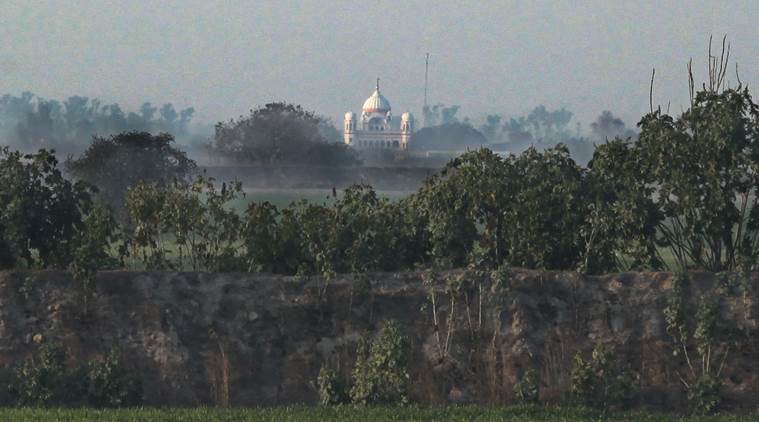Vice President Venkaiah Naidu’s move to lay a foundation stone for Kartarpur Sahib road corridor in village Mann in Gurdaspur district in Punjab, has of course taken place at a time when relations between India and Pakistan are in the worst phase of their diplomatic engagement. Even though the two countries have not positioned their armies in eyeball to eyeball position on borders, their trust gap has only widened in the recent past. In the killing of three people in a grenade attack on the Nirankari congregation in Rajasansi near Amritsar, Pakistan’s Inter-Services Intelligence hands are suspected. Yet good thing is that the two countries, leaving aside their rancor and animosity, have come together to open a new chapter in their ties; they have decided to construct a visa-free corridor which will connect Dera Baba Nanak in Gurdaspur to Kartarpur in Pakistan.
What is, however, really praise worthy is that Pakistan didn’t hesitate to extend its help in the reopening of a route that was closed after India-Pakistan partition in 1947. Rather, Pakistan Foreign Minister Shah Mahmood Qureshi extended invitation to his Indian counterpart Sushma Swaraj, Punjab Chief Minister Captain Amrinder Singh, Punjab Minister Navjot Singh Siddhu to attend ground breaking ceremony in Pakistan on November 28. While Sushma Swaraj thanked her Pakistani counterpart for the invitation, but she agreed to send Union ministers Harshimrat Kaur and Hardeep Puri to Pakistan, instead of travelling herself to the country to attend the ceremony. The Punjab Chief Minister declined the invitation to visit Pakistan for the ceremony. Nonetheless, pilgrims from India will be able to visit Kartarpur Sahib (where Guru Nanak had breathed his last) by November 29, 2019, marking the 550th anniversary of Guru Nanak.
It was twenty years ago, during then Prime Minister Atal Behari Vajpayee’s visit to Lahore, India had put the demand for a corridor to facilitate hurdle free, visa free movement of Sikh pilgrims to Kartarpur Sahib. Last year, a team of officials from Pakistan during the Nawaz Sharif government had visited India to discuss with Indian officials regarding the opening of road corridor between the two countries. But nothing moved till new government headed by cricketer-turned-politician Imran Khan came to power. The new Pakistan government accepted India’s proposal forthrightly. After this, both sides swung into action. On November 22, the Union Cabinet announced the development of the Kartarpur Sahib corridor. Soon after this, Prime Minister Narendra Modi compared it with the Berlin Wall that divided East and West Germany before it was pulled down in 1989. “Had anyone ever thought that the Berlin Wall would fall. May be with the blessings of Guru Nanak Devji, this Kartarpur corridor will not just remain a corridor, but act as a bridge between the people of India and Pakistan.”
These developments, indeed, will bring warmth in the chilled relations of the two countries. But then what is significant about Kartarpur Sahib corridor is that it may lead to fructification of a faith corridor concept between India and Pakistan and more and more religious sites between the two countries will be thrown open for pilgrims from both sides. Pakistan occupied Kashmir-based Sharda Peeth is another religious shrine about which a committee on Sharda Peeth has asked for the cross-border bus services for Kashmiri Pandit pilgrims. However, the shrine diplomacy will last till the two countries invest trust in each other. For this, Pakistan’s current leadership has to do away with terrorism first and foremost. Pakistan Prime Minister Imran Khan’s dream of converting Pakistan into a ‘Naya Pakistan’ can’t see light of the day unless civilian and military leadership of the country sit together to formulate a roadmap for easing tension between the two sides. One needs to understand that without taking long term confidence building measures, years of trust gap between the two countries can’t be removed. Most often it has been seen that whenever dates are fixed for meeting between leaders or officials of the two countries, irritating, mischievous and sometime very shocking incidents are triggered from across the border, rendering the whole exercise to defrost tension between the two getting nullified.
In September, India had to cancel a meeting between External Affairs Minister Sushma Swaraj and his Pakistani counterpart Shah Mahmood Qureshi on the sidelines of the United Nations General Assembly just 24 hours after agreeing to it. New Delhi did so after Islamabad released postage stamps glorifying Kashmiri terrorist Burhan Wani, while brutal killings of three policemen in Jammu and Kashmir had shaken the nation. In this background, question being raised by common people is whether Pakistan is ready to turn a new leaf to the two countries’ relations? Still, it is hoped that shrine diplomacy, which will add new momentum in the two countries’ people to people contacts, will do away with irritants that have clouded their ties for over 70 years.
Disclaimer: The opinions expressed in this article are the personal opinions of the author. The facts and opinions appearing in the article do not reflect the views of NEWSD and NEWSD does not assume any responsibility or liability for the same


















